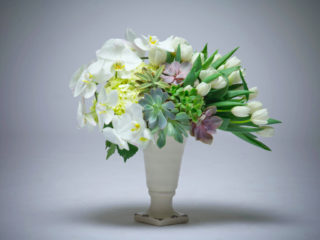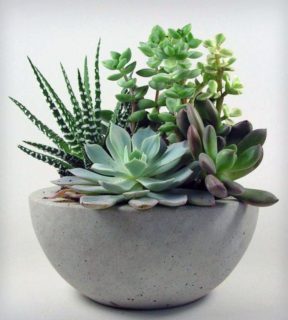Some of the most commonly used plants, both indoor and in landscapes, pose a hidden threat to our pets. That threat could range from mouth irritation and behavioral changes, to digestive distress, to death. In order to protect your pets, it’s a good idea to familiarize yourself with the risky varieties.
WHY DO ANIMALS EAT PLANTS?
Cats and dogs love to nibble on plants. Often, they use plants to aid in digestion. Sometimes animals eat plants to induce vomiting, to clear their systems of toxins, parasites, bones or fur. Sometimes pets eat plants just because they taste good. We would be hard-pressed to monitor our pets 24/7 to prevent undesirable plant chewing, so it makes sense to eliminate access to dangerous varieties.


WHAT PLANTS ARE HARMFUL TO PETS?
As I scrolled through Facebook this week, I noticed a photo featuring a store display of potted Easter lilies. Underneath was a note warning consumers against bringing a lily home if there is a cat in residence. Some pet owners have learned the hard way that lilies are highly toxic to cats, causing renal failure, and often death, if any part of the plant is ingested. Lilies do not pose a threat to dogs or humans.

Not only do we need to be mindful of our houseplants, many common landscape plants are toxic to animals. Plant varieties that are toxic to both cats and dogs include:
- Amaryllis
- Azaleas and Rhododendrons
- Caladium
- Chrysanthemum
- Cyclamen
- Daffodil bulbs
- Dieffenbachia
- English Ivy
- Foxglove
- Hydrangea
- Kalanchoe
- Morning Glory
- Oleander
- Peace Lily
- Pothos
- Rhododendron
- Sago Palm
- Schefflera (Umbrella Tree)
- Tulip and Narcissus bulbs
- Wisteria
- Yew


While this list is by no means comprehensive, it includes many of the most widely used plants in our homes and landscapes. The Sago Palm, for example, is one of the most dangerous plants for pets. All parts of the plant are toxic for animals, but the seed pod is the most deadly. The toxin, Cycasin, can do its damage in as little as 15 minutes post-ingestion. If untreated, liver failure is imminent.
WHAT PLANTS ARE SAFE FOR PETS?
- African Violets
- Air Plants
- Aluminum Plant (Watermelon Plant)
- Begonias
- Camellias
- Christmas Cactus
- Some Ferns (Boston and Maidenhair are safe; Asparagus Ferns are actually in the Lily family and are toxic)
- Friendship Plant
- Fuchsia
- Some herbs, including Rosemary, Thyme, Dill, Fennel, Basil
- Lipstick Plant
- Marigolds
- Parlor Palm
- Phalaenopsis Orchid
- Polka Dot Plant
- Prayer Plant
- Snapdragons
- Some succulents (excluding Jade)
- Summer Hyacinth
SIGNS OF DISTRESS
Some toxins take only minutes to have affect, while others may develop over time. Some symptoms to watch for include:
- redness, swelling or itchiness of the skin or mouth
- difficulty breathing
- vomiting
- diarrhea
- lethargy
- seizures
- excessive drinking or urinating
- fast, slow, or irregular heartbeat
IMMEDIATE CARE
Time is of the essence if you suspect your pet has ingested a toxic plant. Identifying the plant is a crucial step in a correct diagnosis. Certain toxins impact specific organs, so the veterinarian will want to run tests specific to those organs.
It is important to consult with a veterinarian before inducing vomiting, as that may actually make matters worse. The caustic toxin may damage the esophagus on the way back up. If the animal has vomited, the veterinarian may give the animal activated charcoal to absorb any remaining toxic material in the gut.

Lilium shop dog, Winston (who himself is a connoisseur of fine acorns) says, “prevention is always the best plan, but if your pet manages to find a toxic plant to nibble, contact your veterinarian or one of the following help lines immediately.”
Pet Poison Help Line: 1-855-213-6680
ASPCA Animal Poison-Control Center: 1-888-426-4435










